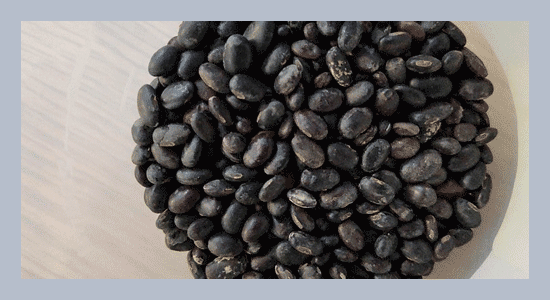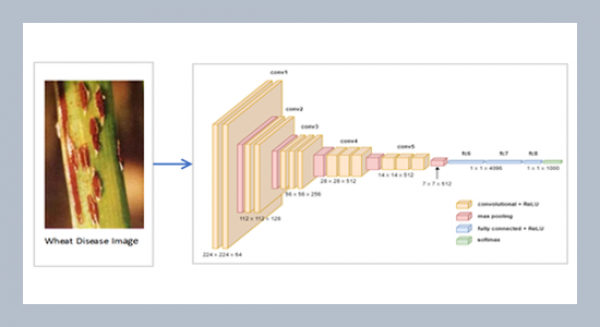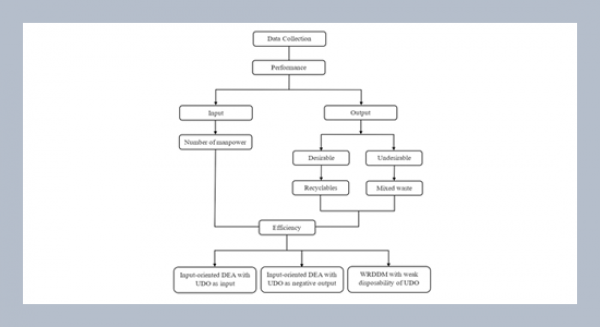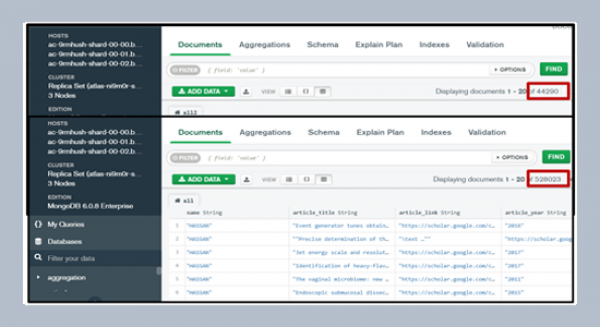REFERENCES
- Akindehin, S., Jung, Y.-S., Kim, S.-N., Son, Y.-H., Lee, I., Seong, J.K., Jeong, H.W., Lee, Y.-H. 2018. Myricetin exerts anti-obesity effects through upregulation of SIRT3 in adipose tissue. Nutrients, 10, 1962.
- Baek, J., Lee, E., Kim, N., Kim, S.L., Choi, I., Ji, H., Chung, Y.S., Choi, M.-S., Moon, J.-K., Kim, K.-H. 2020. High throughput phenotyping for various traits on soybean seeds using image analysis. Sensors, 20, 248.
- Bahadori, M.B., Dinparast, L., Zengin, G., Sarikurkcu, C., Bahadori, S., Asghari, B., Movahhedin, N. 2017. Functional components, antidiabetic, anti-Alzheimer’s disease, and antioxidant activities of Salvia syriaca L. International journal of food properties 20, 1761–1772.
- Chen, P.-N., Chu, S.-C., Chiou, H.-L., Chiang, C.-L., Yang, S.-F., Hsieh, Y.-S. 2005. Cyanidin 3-glucoside and peonidin 3-glucoside inhibit tumor cell growth and induce apoptosis in vitro and suppress tumor growth in vivo. Nutrition and cance, 53, 232–243.
- Chorfa, N., Savard, S., Belkacemi, K. 2016. An efficient method for high-purity anthocyanin isomers isolation from wild blueberries and their radical scavenging activity. Food chemistry, 197, 1226–1234.
- Desmarchelier, A., Hamel, J., Delatour, T. 2020. Sources of overestimation in the analysis of acrylamide-in coffee by liquid chromatography mass spectrometry. Journal of Chromatography A 1610, 460566.
- Ezekiel, R., Singh, N., Sharma, S., Kaur, A. 2013. Beneficial phytochemicals in potato—a review. Food Research International, 50, 487–496.
- Ganesan, K., Xu, B. 2017. A critical review on polyphenols and health benefits of black soybeans. Nutrients, 9, 455.
- Ganesan, K., Xu, B. 2017. Polyphenol-rich dry common beans (Phaseolus vulgaris L.) and their health benefits. International journal of molecular sciences, 18, 2331.
- Green, C.O., Wheatley, A.O., Osagie, A.U., Morrison, E.Y.S.A., Asemota, H.N. 2007. Determinutesation of polymethoxylated flavones in peels of selected Jamaican and Mexican citrus (Citrus spp.) cultivars by high‐performance liquid chromatography. Biomedical chromatography 21, 48–54.
- Jeng, T.L., Shih, Y.J., Wu, M.T., Wang, C.S., Sung, J.M. 2013. Evaluations and Selections for High Isoflavone Black Soybean Mutants Induced by NaN 3 Treatment. American Journal of Plant Sciences, 2013.
- Kim, H.G., Kim, G.W., Oh, H., Yoo, S.Y., Kim, Y.O., Oh, M.S. 2011. Influence of roasting on the antioxidant activity of small black soybean (Glycine max L. Merrill). LWT-Food Science and Technology, 44, 992–998.
- Koh, K., Youn, J.E., Kim, H.-S. 2014. Identification of anthocyanins in black soybean (Glycine max (L.) Merr.) varieties. Journal of food science and technology, 51, 377–381.
- Kumari, S., Krishnan, V., Sachdev, A. 2015. Impact of soaking and germinutesation durations on antioxidants and anti-nutrients of black and yellow soybean (Glycine max. L) varieties. Journal of Plant Biochemistry and Biotechnology, 24, 355–358.
- Lang, H., Yang, R., Dou, X., Wang, D., Zhang, L., Li, J., Li, P. 2019. Simultaneous determinutesation of 19 phenolic compounds in oilseeds using magnetic solid phase extraction and LC-MS/MS. LWT-Food Science and Technology, 107, 221–227.
- Lin, H.-Y., Lin, T.-S., Wang, C.-S., Chien, H.-J., Juang, Y.-M., Chen, C.-J., Lai, C.-C. 2019. Rapid determinutesation of bioactive compounds in the different organs of Salvia Miltiorrhiza by UPLC-MS/MS. Journal of Chromatography B, 1104, 81–88.
- Matsukawa, T., Inaguma, T., Han, J., Villareal, M.O., Isoda, H. 2015. Cyanidin-3-glucoside derived from black soybeans ameliorate type 2 diabetes through the induction of differentiation of preadipocytes into smaller and insulin-sensitive adipocytes. The Journal of Nutritional Biochemistry, 26, 860–867.
- Mojica, L., Berhow, M., de Mejia, E.G. 2017. Black bean anthocyanin-rich extracts as food colorants: Physicochemical stability and antidiabetes potential. Food chemistry 229, 628–639.
- Nakajima, J.-i., Tanaka, I., Seo, S., Yamazaki, M., Saito, K. 2004. LC/PDA/ESI-MS profiling and radical scavenging activity of anthocyanins in various berries. Journal of Biomedicine and Biotechnology 2004, 241.
- Nathiya, S., Durga, M., Devasena, T. 2014. Quercetin, encapsulated quercetin and its application—A review. Analgesia, 10.
- Petersson, E.V., Liu, J., Sjöberg, P.J., Danielsson, R., Turner, C. 2010. Pressurized hot water extraction of anthocyanins from red onion: A study on extraction and degradation rates. Analytica chimica acta 663, 27–32.
- Rossetto, M., Vanzani, P., Mattivi, F., Lunelli, M., Scarpa, M., Rigo, A. 2002. Synergistic antioxidant effect of catechin and malvidin 3-glucoside on free radical-initiated peroxidation of linoleic acid in micelles. Archives of Biochemistry and Biophysics, 408, 239–245.
- Rue, E.A., Rush, M.D., van Breemen, R.B. 2018. Procyanidins: a comprehensive review encompassing structure elucidation via mass spectrometry. Phytochemistry Reviews, 17, 1–16.
- Shin, D.Y., Ryu, C.H., Lee, W.S., Kim, D.C., Kim, S.H., Hah, Y.-S., Lee, S.J., Shin, S.C., Kang, H.S., Choi, Y.H. 2009. Induction of apoptosis and inhibition of invasion in human hepatoma cells by anthocyanins from meoru. Annals of the New York Academy of Sciences, 1171, 137.
- Tanaka, Y., Sasaki, N., Ohmiya, A. 2008. Biosynthesis of plant pigments: anthocyanins, betalains and carotenoids. The Plant Journal 54, 733–749.
- Tang, B., He, Y., Liu, J., Zhang, J., Li, J., Zhou, J., Ye, Y., Wang, J., Wang, X. 2019. Kinetic investigation into pH-dependent color of anthocyanin and its sensing performance. Dyes Pigments, 170, 107643.
- Tripoli, E., La Guardia, M., Giammanco, S., Di Majo, D., Giammanco, M. 2007. Citrus flavonoids: Molecular structure, biological activity and nutritional properties: A review. Food chemistry, 104, 466–479.
- Wang, F., Chen, L., Chen, H., Chen, S., Liu, Y. 2019. Analysis of flavonoid metabolites in citrus peels (Citrus reticulata “Dahongpao”) using UPLC-ESI-MS/MS. Molecules, 24, 2680.
- Willemse, C.M., Stander, M.A., de Villiers, A. 2013. Hydrophilic interaction chromatographic analysis of anthocyanins. 1319, 127–140.
- Xie, Y., Zhu, X., Li, Y., Wang, C. 2018. Analysis of the pH-dependent Fe (iii) ion chelating activity of anthocyanin extracted from black soybean [glycine max (l.) merr.] coats. 66, 1131–1139.
- Yang, Y., Shi, Z., Reheman, A., Jin, J.W., Li, C., Wang, Y., Andrews, M.C., Chen, P., Zhu, G., Ling, W. 2012. Plant food delphinidin-3-glucoside significantly inhibits platelet activation and thrombosis: novel protective roles against cardiovascular diseases. 7, e37323.
- Yun, J.W., Lee, W.S., Kim, M.J., Lu, J.N., Kang, M.H., Kim, H.G., Kim, D.C., Choi, E.J., Choi, J.Y., Kim, H.G. 2010. Characterization of a profile of the anthocyanins isolated from Vitis coignetiae Pulliat and their anti-invasive activity on HT-29 human colon cancer cells. Food and chemical toxicology, 48, 903–909.















